Related Research Articles
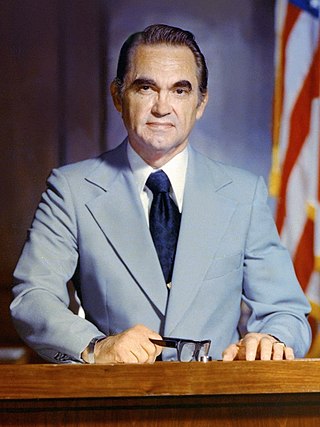
George Corley Wallace Jr. was an American politician and judge who served as the 45th governor of Alabama for four terms. He is remembered for his staunch segregationist and populist views. During Wallace's tenure as governor of Alabama, he promoted "industrial development, low taxes, and trade schools." Wallace unsuccessfully sought the United States presidency as a Democratic Party candidate three times, and once as an American Independent Party candidate, carrying five states in the 1968 election. Wallace opposed desegregation and supported the policies of "Jim Crow" during the Civil Rights Movement, declaring in his 1963 inaugural address that he stood for "segregation now, segregation tomorrow, segregation forever."

James Alexander Hood was one of the first African Americans to enroll at the University of Alabama in 1963, and was made famous when Alabama Governor George Wallace attempted to block him and fellow student Vivian Malone from enrolling at the then all-white university, an incident which became known as the "Stand in the Schoolhouse Door".

Theophilus Eugene "Bull" Connor was an American politician who served as Commissioner of Public Safety for the city of Birmingham, Alabama, for more than two decades. A member of the Democratic Party, he strongly opposed the Civil Rights Movement in the 1960s. Under the city commission government, Connor had responsibility for administrative oversight of the Birmingham Fire Department and the Birmingham Police Department, which also had their own chiefs.

Lurleen Burns Wallace was an American politician who served as the 46th governor of Alabama for 16 months from January 16, 1967, until her death on May 7, 1968. She was the first wife of Alabama governor George Wallace, whom she succeeded as governor because at the time the Alabama constitution forbid consecutive terms.
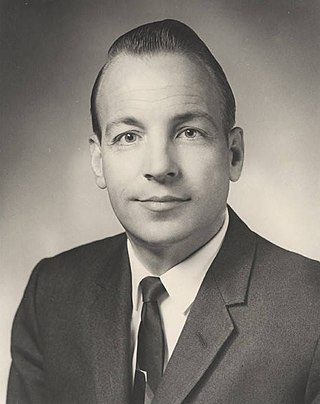
Albert Preston Brewer was an American lawyer and Democratic Party politician who served as the 47th governor of Alabama from 1968 to 1971. He previously served as the lieutenant governor of Alabama, the speaker of the Alabama House of Representatives, and as an Alabama state representative representing Morgan County from 1955 to 1967.

James Browning Allen was an American Democratic politician serving as U.S. senator representing Alabama. Allen previously served as the Lieutenant Governor of Alabama and also served in the Alabama Senate and the Alabama House of Representatives.
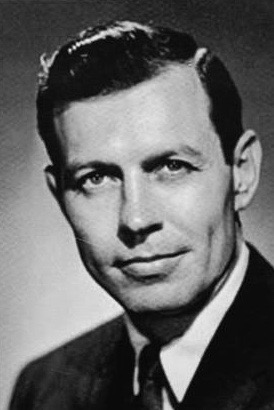
Carl Edward Sanders Sr. was an American attorney and politician who served as the 74th governor of Georgia from 1963 to 1967.

Thomas LeRoy Collins was an American politician who served as the 33rd governor of Florida from 1955 to 1961. Collins began his governorship after winning a special election in 1954, and was elected to a four-year term in 1956.

Asa Earl Carter was a 1950s segregationist political activist, Ku Klux Klan organizer, and later Western novelist. He co-wrote George Wallace's well-known pro-segregation line of 1963, "Segregation now, segregation tomorrow, segregation forever", and ran in the Democratic primary for governor of Alabama on a white supremacist ticket. Years later, under the pseudonym of supposedly Cherokee writer Forrest Carter, he wrote The Rebel Outlaw: Josey Wales (1972), a Western novel that was adapted into a 1976 film featuring Clint Eastwood that added to the National Film Registry, and The Education of Little Tree (1976), a best-selling, award-winning book which was marketed as a memoir but which turned out to be fiction.

John Malcolm Patterson was an American politician. He served one term as Attorney General of Alabama from 1955 to 1959, and, at age 37, served one term as the 44th Governor of Alabama from 1959 to 1963.

Frank Minis Johnson Jr. was a United States district judge and United States circuit judge serving 1955 to 1999 on the United States District Court for the Middle District of Alabama, United States Court of Appeals for the Fifth Circuit and United States Court of Appeals for the Eleventh Circuit. He made landmark civil rights rulings that helped end segregation and disenfranchisement of African Americans in the South. In the words of journalist and historian Bill Moyers, Judge Johnson "altered forever the face of the South."
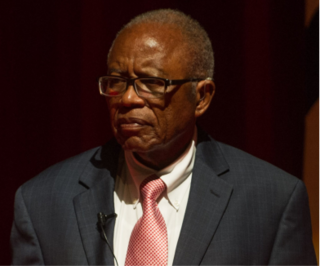
Fred David Gray is an American civil rights attorney, preacher, activist, and state legislator from Alabama. He handled many prominent civil rights cases, such as Browder v. Gayle, and was elected to the Alabama House of Representatives in 1970, along with Thomas Reed, both from Tuskegee. They were the first black state legislators in Alabama in the 20th century. He served as the president of the National Bar Association in 1985, and in 2001 was elected as the first African-American President of the Alabama State Bar.
Richmond McDavid Flowers Sr. was the attorney general of the U.S. state of Alabama from 1963 to 1967, best known for his opposition to then Governor George C. Wallace's policy of racial segregation. He also served in the Alabama Senate.
Former Governor of Alabama George Wallace ran in the 1968 United States presidential election as the candidate for the American Independent Party against Richard Nixon and Hubert Humphrey. Wallace's pro-segregation policies during his term as Governor of Alabama were rejected by most. The impact of the Wallace campaign was substantial, winning the electoral votes of several states in the Deep South. Although Wallace did not expect to win the election, his strategy was to prevent either major party candidate from winning a majority in the Electoral College. This would throw the election into the House of Representatives, where Wallace would have bargaining power sufficient to determine, or at least strongly influence, the selection of a winner.

Following his election as governor of Alabama, George Wallace delivered an inaugural address on January 14, 1963 at the state capitol in Montgomery. At this time in his career, Wallace was an ardent segregationist, and as governor he challenged the attempts of the federal government to enforce laws prohibiting racial segregation in Alabama's public schools and other institutions. The speech is most infamous for the phrase "segregation now, segregation tomorrow, segregation forever", which became a rallying cry for those opposed to integration and the civil rights movement.
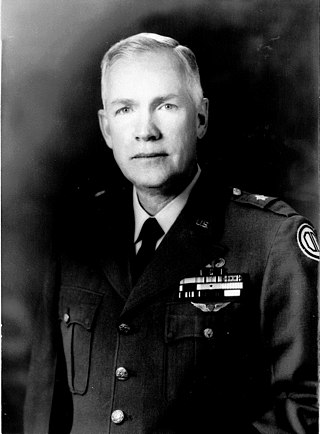
Henry Vance Graham was an American Army National Guard general who protected black activists during the civil rights movement. He is most famous for asking Alabama governor George Wallace to step aside and permit black students to register for classes at the University of Alabama in Tuscaloosa in 1963 during the "Stand in the Schoolhouse Door" incident.
Cornelia Wallace was the First Lady of Alabama from 1971–1978 and the second wife of Democratic Governor George C. Wallace.

The Stand in the Schoolhouse Door took place at Foster Auditorium at the University of Alabama on June 11, 1963. In a symbolic attempt to keep his inaugural promise of "segregation now, segregation tomorrow, segregation forever" and stop the desegregation of schools, George Wallace, the Governor of Alabama, stood at the door of the auditorium as if to block the way of the two African American students attempting to enter: Vivian Malone and James Hood.

Harold Wayne Greenhaw was an American writer and journalist. The author of 22 books who chronicled changes in the American South from the civil rights movement to the rise of a competitive Republican Party, he is known for his works on the Ku Klux Klan and the exposition of the My Lai Massacre of 1968. Greenhaw wrote for various Alabamian newspapers and magazines, worked as the state's tourism director, and was considered "a strong voice for his native state".
The Alabama Academy of Honor recognizes one hundred living Alabamians for outstanding accomplishments and services to Alabama and the United States. By act of the Alabama Legislature, only one hundred living people may be members at any time. Up to ten additional members per year are elected by current members when honorees pass away, by majority vote in order of highest vote total. Any Alabama citizen or Academy member may nominate people for election. Living present and past governors of Alabama are automatically members of the Academy and do not count against the 100-person maximum. At any time, no more than twenty-five percent of the Academy's members may be politicians.
References
- ↑ Olson, James S. (2009). Making Cancer History:Disease and Discovery at the University of Texas M. D. Anderson Cancer Center. Johns Hopkins University Press. p. 166. ISBN 9780801890567.
- 1 2 3 4 "George LeMaistre, 83, Banker and Ex-Chairman of the F.D.I.C." The New York Times. September 29, 1994. Retrieved March 4, 2021.
- 1 2 3 Carter, Dan T. (1995). The politics of rage : George Wallace, the origins of the new conservatism, and the transformation of American politics. New York: Simon & Schuster. p. 130. ISBN 0-684-80916-8. OCLC 32739924.